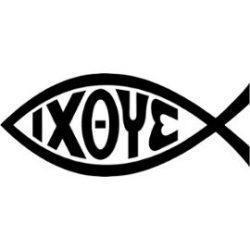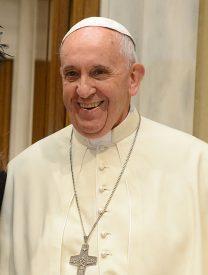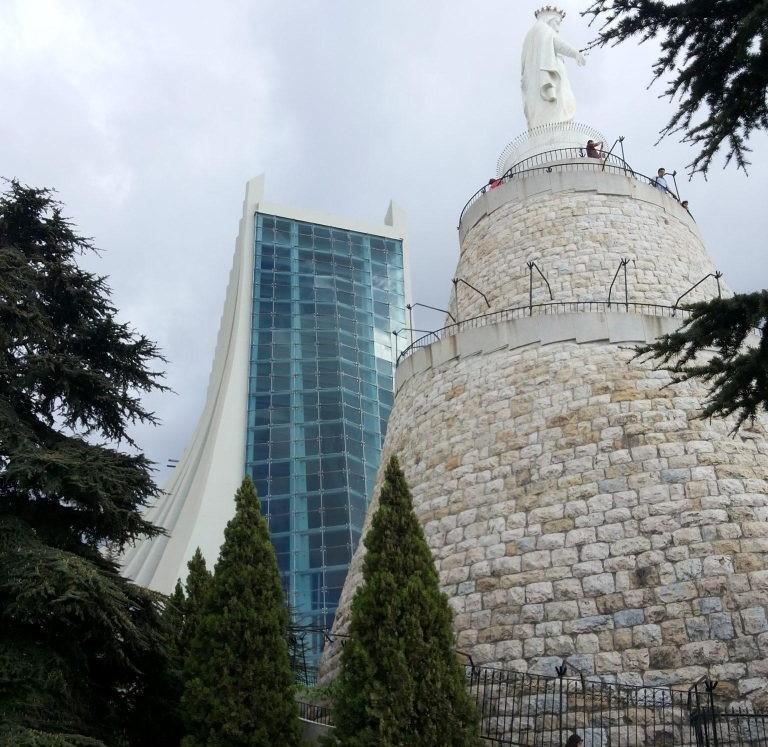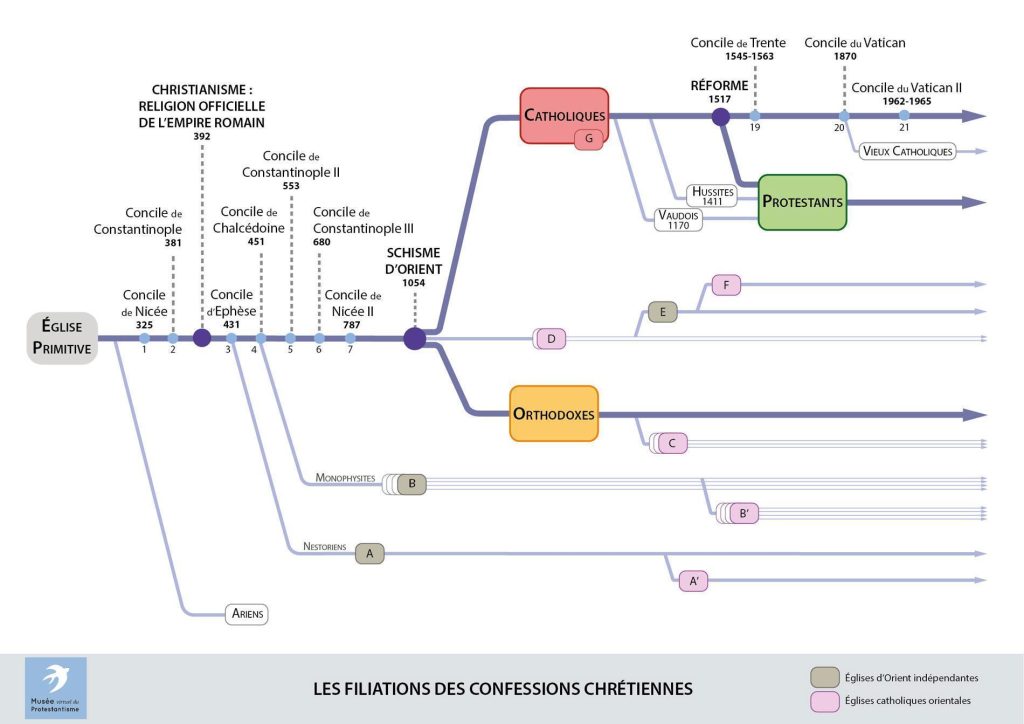The orthodox
The East-West schism in 1054 separated the Oriental Churches from the Occidental ones. The orthodox were the main branch of Christians of oriental origin.
Their organisation changed over centuries. After the Constantinople, Alexandria, Antioch and Jerusalem Churches, several Autocephalous Churches were founded.
Légende
C : Catholiques d’origine orthodoxe
D : Catholiques antérieurs au schisme d’Orient
E : Chrétiens d’origine catholique malabare
F : Catholiques d’origine malankare
The East-West Schism in 1054
Oriental and Occidental Churches were the one and only Church before the East-West Schism took place in 1054. The consequence of the Schism was mutual excommunication. It was brought about by old disagreements, emphasized by arguments concerning:
– hierarchy – the bishop in Rome claimed the first rank in the Christian clergy,
– theology – the filioque quarrel: does the Holy Spirit proceed from the Father, or from the Father and the Son? The dogma was introduced by Charlemagne in the latin version of the Credo, and rejected by the Oriental Churches,
– liturgy and ecclesiology – the Constantinople patriarch blamed the Latins for fasting on Saturdays and for allowing the consumption of dairy products during the first week of Lent; it also denounced the Priests’ obligatory celibacy.
But excommunications in 1054, in spite of their spectacular aspect had minor consequences, and Constantinople and Rome were still related. The effective break took place in 1203-1204 during the 4th crusade when the Crusaders sacked Constantinople. In 1439 the Orthodox Church was looking for support against the Turkish threat and accepted to take part in an ecumenical council, ending in Florence in 1439, which decided that the Greek and Latin Churches were united, but to no avail. In 1453, when the Ottomans conquered Constantinople the drift between Catholics and Orthodox increased.
The Orthodox Churches
The widening gap between Oriental and Occidental Churches ended with the Est-West schism.
The Orthodox Church, or Communion of Orthodox Churches, grouped all the ‘Churches of the seven councils’, i.e. those acknowledging the first seven ecumenical councils.
In 1516, the Ottoman sultan had conquered the whole Middle-East, Constantinople became the religious capital of the Orthodox: the Constantinople patriarch had authority over the Jerusalem and Alexandria Patriarchates; it still plays a prominent honorary role in the other Orthodox Patriarchates.
The number of Autocephalous Orthodox Churches – headed by a patriarchate or an independent Metropolitan – changed over centuries. Today they are Orthodox Churches of:
– Constantinople;
– Alexandria;
– Antioch;
– Jerusalem;
– Georgia;
– Cyprus;
– Serbia;
– Russia;
– Greece;
– Romania;
– Bulgaria;
– Albania;
– Poland;
– the Czech Republic and Slovakia.
There are also autonomous Churches and independent Churches.
The Catholic branches derived from Orthodoxy
Three branches were derived from Orthodoxy and joined Catholicism while keeping their liturgy:
-The Ukrainian Greek Catholic Church in 1596,
-The Romanian Greek Catholic Church in 1688,
The Melkite Greek Catholic Church, derived from the Antioch Church in 1724.
Progress in the tour
Bibliography
- Books
Associated tours
-

Filiation of the Christian confessions
From its beginnings Christianity was characterized by a great doctrinal and ritual diversity, which caused controversies and schisms. The two most important ones were the great East-West schism separating the...
Associated notes
-

The first schisms within Christianity
Christianity developed quickly in the Roman Empire with a lot of diversity. Disputes arose and were settled by ecumenical councils which defined the correct doctrine and condemned the others. They... -

The Catholics
The Catholics are the largest branch of Christianity. They belong to the Roman Church and the united East Churches in Rome. -

Churches in the Orient
A profusion of Churches exit in the East, many are united to the Roman Catholic Church.

